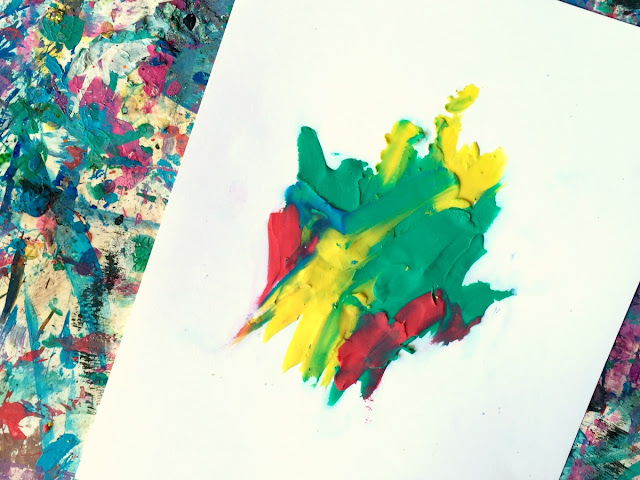(This post
contains affiliate links. Please see my disclosure statement for more
information).
Okay, this
activity is definitely what you’re looking for. It’s clay paint, finger paint,
process art-making fun! And, your child gets in a fine motor workout. Bonus
points if you connect to science too (which you very easily can). How?
Well, first
let’s start the art-making itself. Your child is going to start with a layer of
clay ‘paint’. We’ll get into the specifics in just a moment. This is one of my
absolute favorite artsy ideas. I started using it when I taught gallery-based
museum art classes for preschoolers. Obviously, I could bring real paints into
the art galleries. Imagine your 3-year-old, some temperas and a real Monet. Not
exactly a match-up. So, instead of real paint, I used soft modeling clay. It
spreads well, the colors mix and it creates a pretty cool texture.
This
activity also adds on actual finger paint. Why? Mostly, because you probably
aren’t making this in an art museum. In that case, why not make a mess? And,
here’s where you can add in some science. First, ask your child to make a
prediction. What will happen to the clay when she spreads it out? Or, what will
happen to the clay when she mixes the paint in? Next, make observations. How do
the clay and the paint mix—or how don’t they? During the art activity your
child can experiment with mixing colors (both with the clay and with the
paint).
Now, let’s
get back to the art-making…
Here’s What
You’ll Need:
·
Soft
modeling clay
·
Card stock paper (or cardboard)
Here’s What
to Do:
1. Pull the
clay apart into dime-sized balls.
2. Spread
the clay. Your child can push the clay down and spread it across the paper (in
a finger paint-style motion). She can layer the clay, mix it together or spread
it out in her own design (or, she can make an abstract art piece).
3. Pour the
paint onto a palette. I like to use a simple piece of wax paper. It’s easy. It’s
inexpensive. And, it keeps the paint from getting on your table.
4. Finger
paint—with the paint! Your child can paint on top of the clay, adding new
colors and textures to her artwork.

















